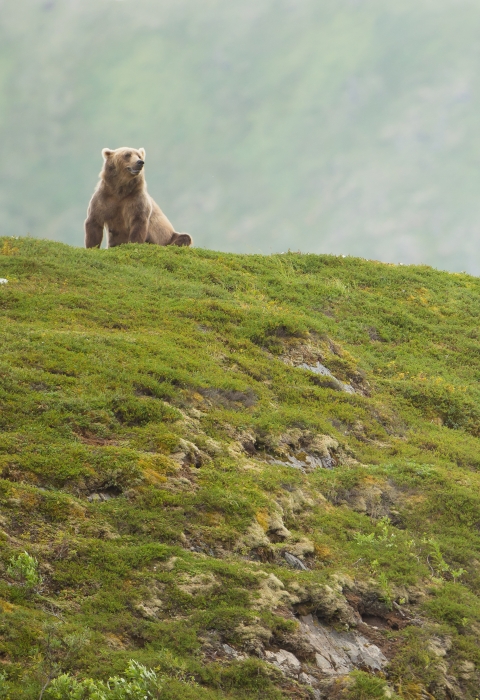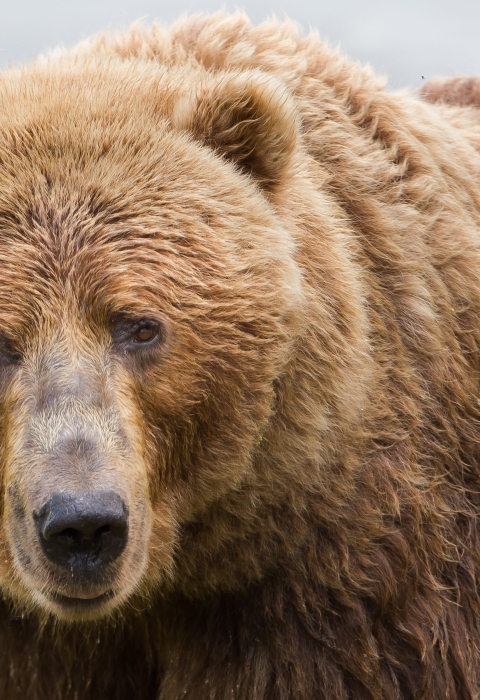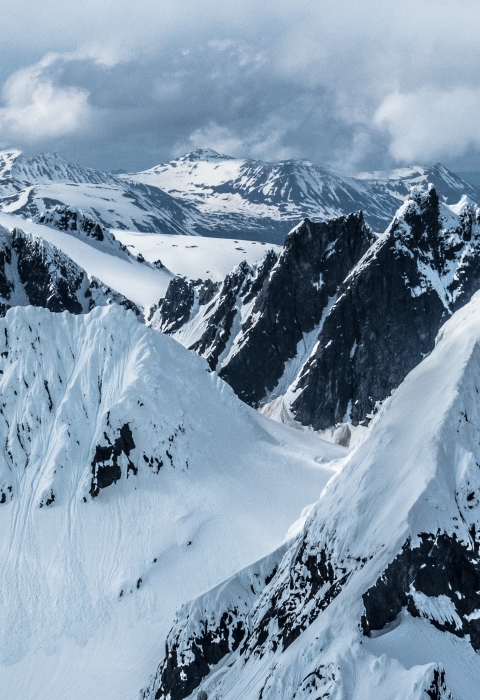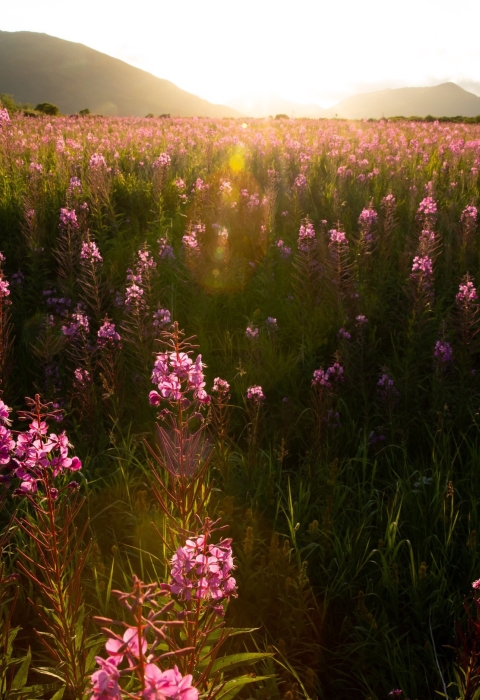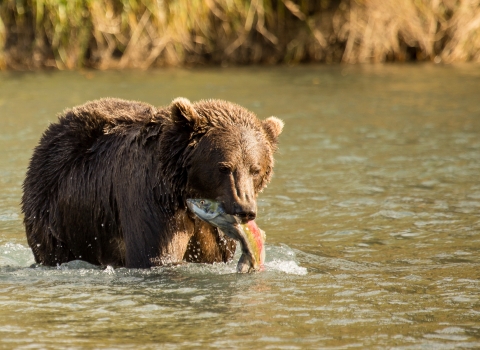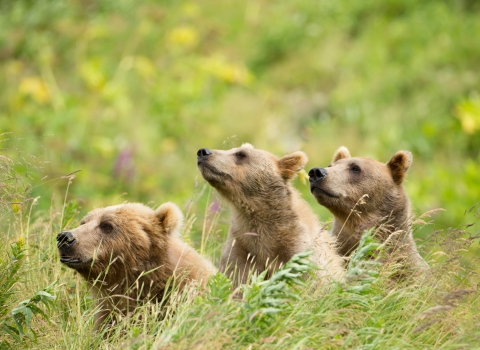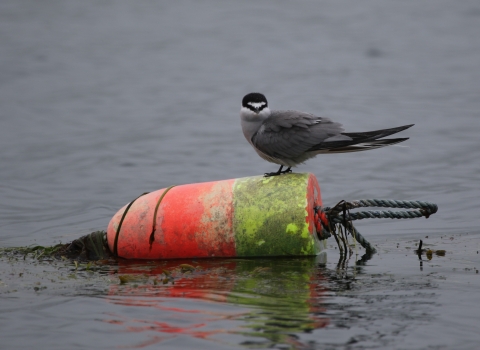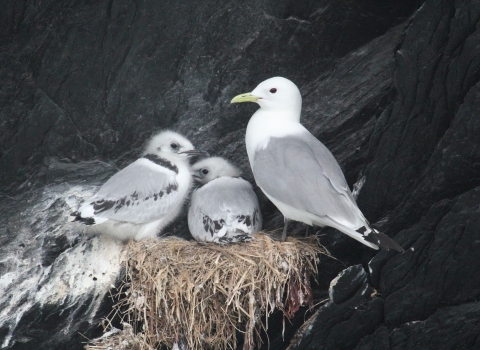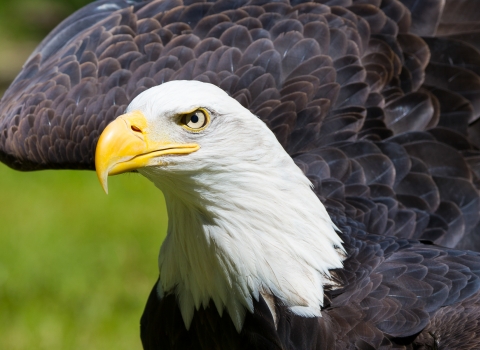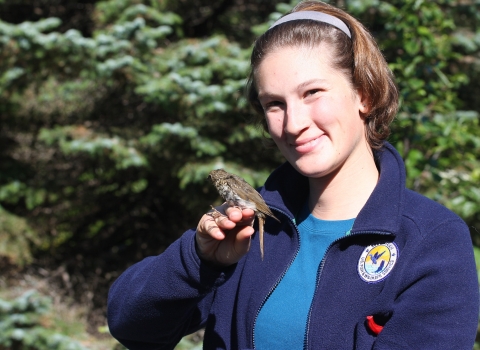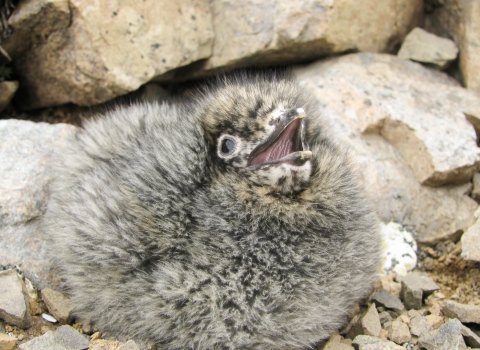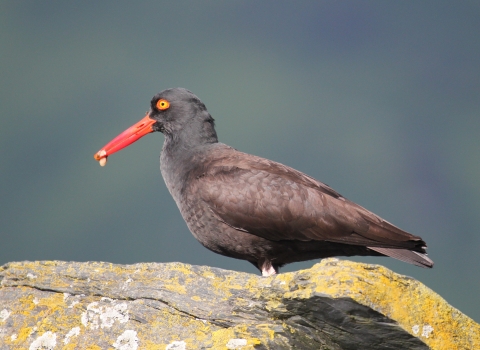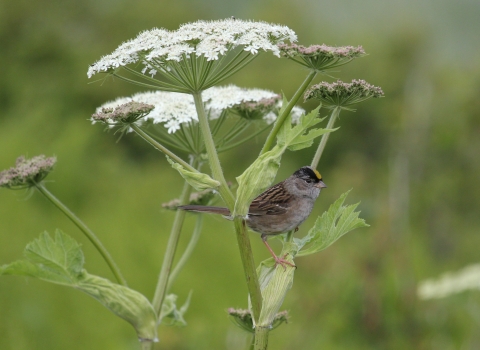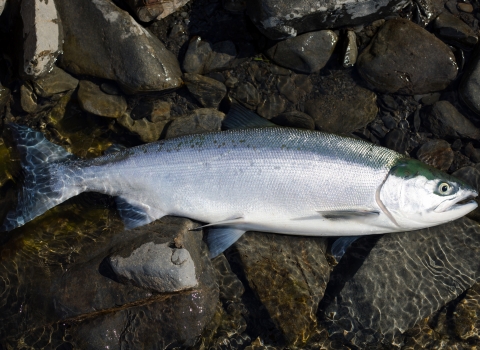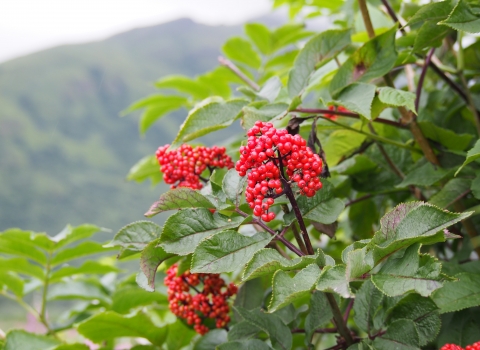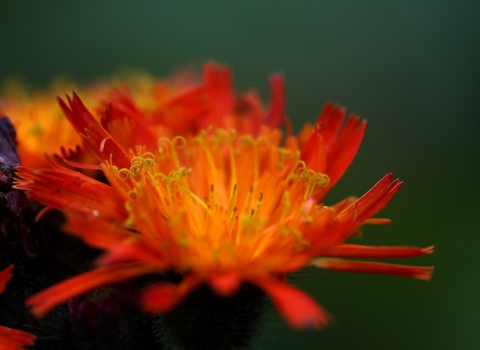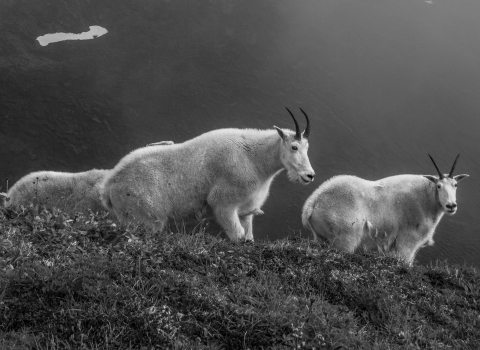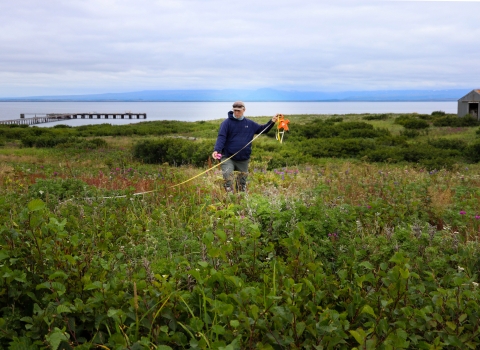Projects and Research
Diverse island ecosystems, abundant fish and wildlife, and a remote wildland setting serve as an ideal outdoor laboratory. Working jointly, biologists with the Refuge, State of Alaska, and U.S. Geological Survey monitor populations of Kodiak brown bear, bald eagle, salmon and other fish and wildlife and their habitats to estimate trends in abundance, survival, and productivity. The Refuge also sponsors and conducts basic and applied research projects, develops monitoring methods, and evaluates management strategies.
By designing and implementing appropriate research and monitoring studies, the Refuge will better understand, conserve, and protect its natural and cultural resources for the continuing benefit of the public.
Salmon are recognized as a critically important food source to Kodiak brown bear (Ursus arctos middendorffi). Seasonal availability of salmon across the landscape influences bear body condition, reproductive performance, and population size. During 2013-2017, Kodiak National Wildlife Refuge engaged the University of Montana and Oregon State University in cooperative research of movements and...
Refuge biologists collaborate annually with Alaska Department of Fish and Game to conduct intensive aerial surveys (IAS) during the summer months to monitor bear population, density and composition on several stream systems within the Refuge. IAS involve flying a small aircraft low over the Refuge and counting the number of bears spotted. There is only a short window of time in May each year...
The Kodiak archipelago is home to both Aleutian and Arctic tern colonies. Aleutian terns are distributed widely across remote areas of coastal Alaska and frequently shift their colony locations from year to year, making it difficult to monitor and research this little known seabird. Arctic terns are circumpolar, and nest both inland and along the coastline of Alaska. Over the past three...
The Kodiak Archipelago is home to high numbers of breeding seabirds, the majority of which breed on U.S. Fish and Wildlife Service lands administered by Alaska Maritime and Kodiak National Wildlife Refuges. Most species of seabirds are colonial and nest at high densities in a variety of coastal habitats including cliff faces, crevices, and burrows in soft soil at both mainland sites and on...
The bald eagle is a common bird species on Kodiak Refuge. There is a long history of counting bald eagles on the refuge. This program began in the 1950s with boat surveys along the shores of Karluk Lake, and the first aerial survey was conducted covering all potential habitat on Kodiak Refuge in 1963. Beginning in 1982 a comprehensive census for nesting bald eagles was carried out every five...
From June until August biologists and volunteers at will mist net and band songbirds at the Kodiak Refuge Headquarters building on the Buskin State Recreation Area. This program has been running on Kodiak since 2010; about 2500 birds have previously been banded and 160 banded individuals have been recaptured in following seasons. The banding effort is part of a North American-wide program...
The Kittlitz’s murrelet (KIMU) is one of the rarest and least known seabirds in the world. This species was first discovered nesting within the boundaries of Kodiak National Wildlife Refuge in 2006 when a botanist working on a remote mountain stumbled upon a large downy chick in a nest. The nest was little more than a shallow depression in a small patch of moss and lichens on the side of a...
In June and August biologists at Kodiak National Wildlife Refuge conduct Nearshore Marine Bird Surveys along a potion of Kodiak Archipelago coastline. Kodiak Archipelago has about as much coastline as the state of California so it can take 3-4 years to complete the survey. One of the major components of the avian biology monitoring program at the refuge, this survey provides...
Established in the 1980s, breeding bird surveys are an annual monitoring program that takes place along the Kodiak road-system. It is conducted by volunteers over two 26-mile routes between June 4th and July 4th.
Biologists began studying sockeye salmon on Kodiak Refuge's Akalura River in 2015, gaining valuable information on salmon enumeration for a remote river system last monitored in 2002. The study uses still photographs and video in a two-stage sample study to establish an estimator and calculate the total run size as well as basic run characteristics. Results from this project also allow...
Berries are an important food source for brown bear and several studies document extensive seasonal use of berries by Kodiak brown bear. However, little is known about the influences of seasonal variation in berry supply. In 2015, the Refuge initiated a pilot study to monitor phenology and abundance of red elderberry, salmonberry, oval-leaf blueberry, and devils club. The monitoring program...
In December 2014, the Western Alaska Landscape Conservation Cooperative approved a strategic plan for implementation of voluntary network-based water temperature monitoring of salmon habitat in the Kodiak Archipelago. As stated in this plan, the goals of the network are to “coordinate the acquisition of water temperature data that meets the salmon management needs of cooperating (networked)...
Invasive species threaten wild habitat and can have disastrous impacts on native plant and wildlife species. The Refuge surveys infestations, works with adjacent landowners, and uses integrated pest-management practices for early detection, prevention, and management of invasive weed problems. For several years, Refuge staff have worked to control a known infestation of orange hawkweed in the...
Surveys of mountain goat abundance have been conducted annually by the Alaska Department of Fish and Game and Kodiak Refuge biologists since 1975. Although survey effort has varied over the years, from island-wide counts to partial surveys, results provide baseline data on historical goat population growth, kid recruitment, and range expansion.
Eighteen mountain goats (7 males and 11...
As part of the National Wetlands Inventory, we are mapping and digitizing high priority wetlands in Alaska’s 16 National Wildlife Refuges.
The U.S. Fish and Wildlife Service is the principal federal agency tasked with providing public information on the status and trends of our Nation's wetlands. Our National Wetlands Inventory provides detailed information...
Invasive Species Program staff collaborate with Alaska's National Wildlife Refuge, the State of Alaska and other partners to protect Alaska's lands and waters by working to detect invasive species infestations while they’re still relatively small and have the highest chance of being successfully eradicated. We survey terrestrial, freshwater, and marine environments for invasive plants and...
